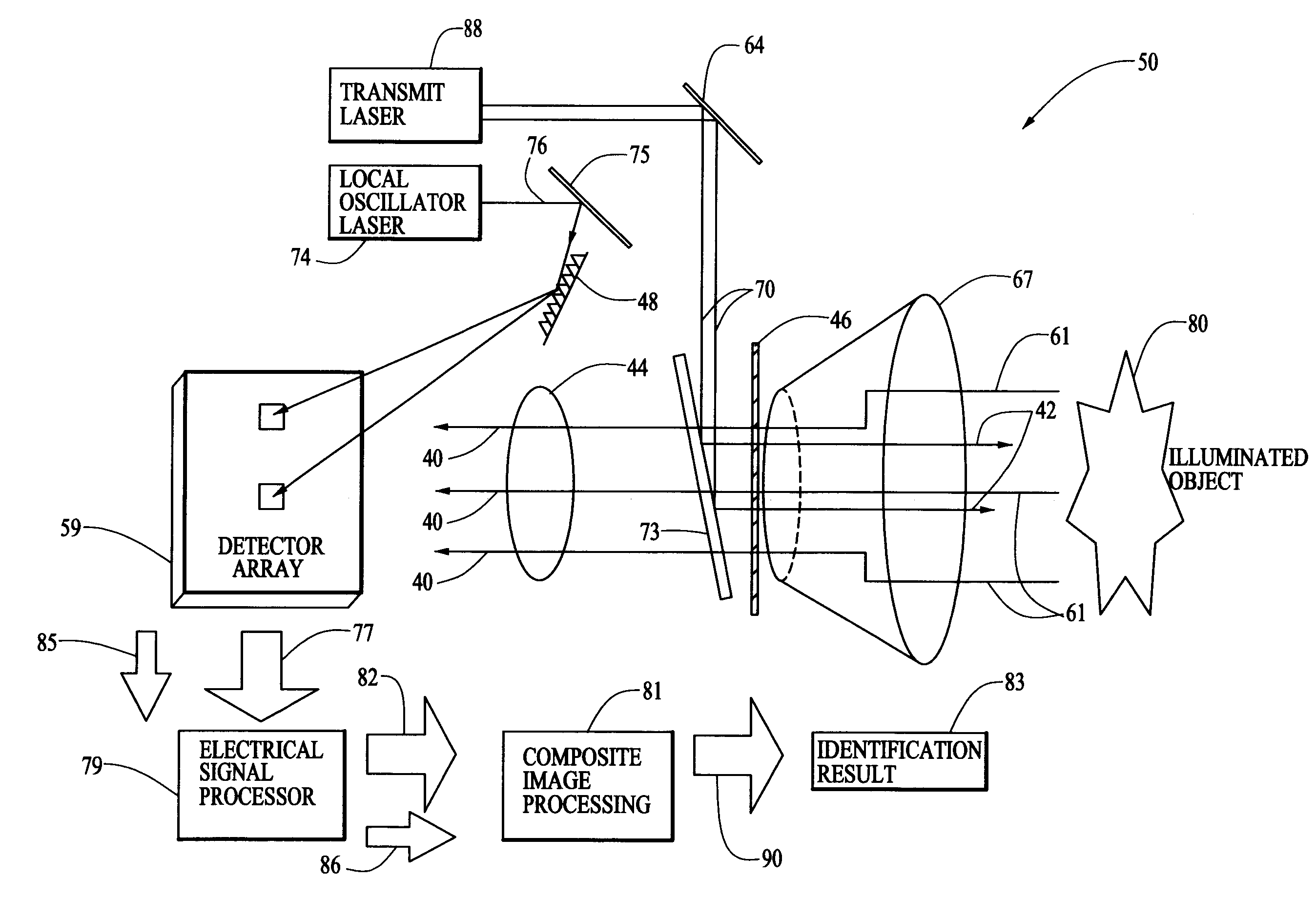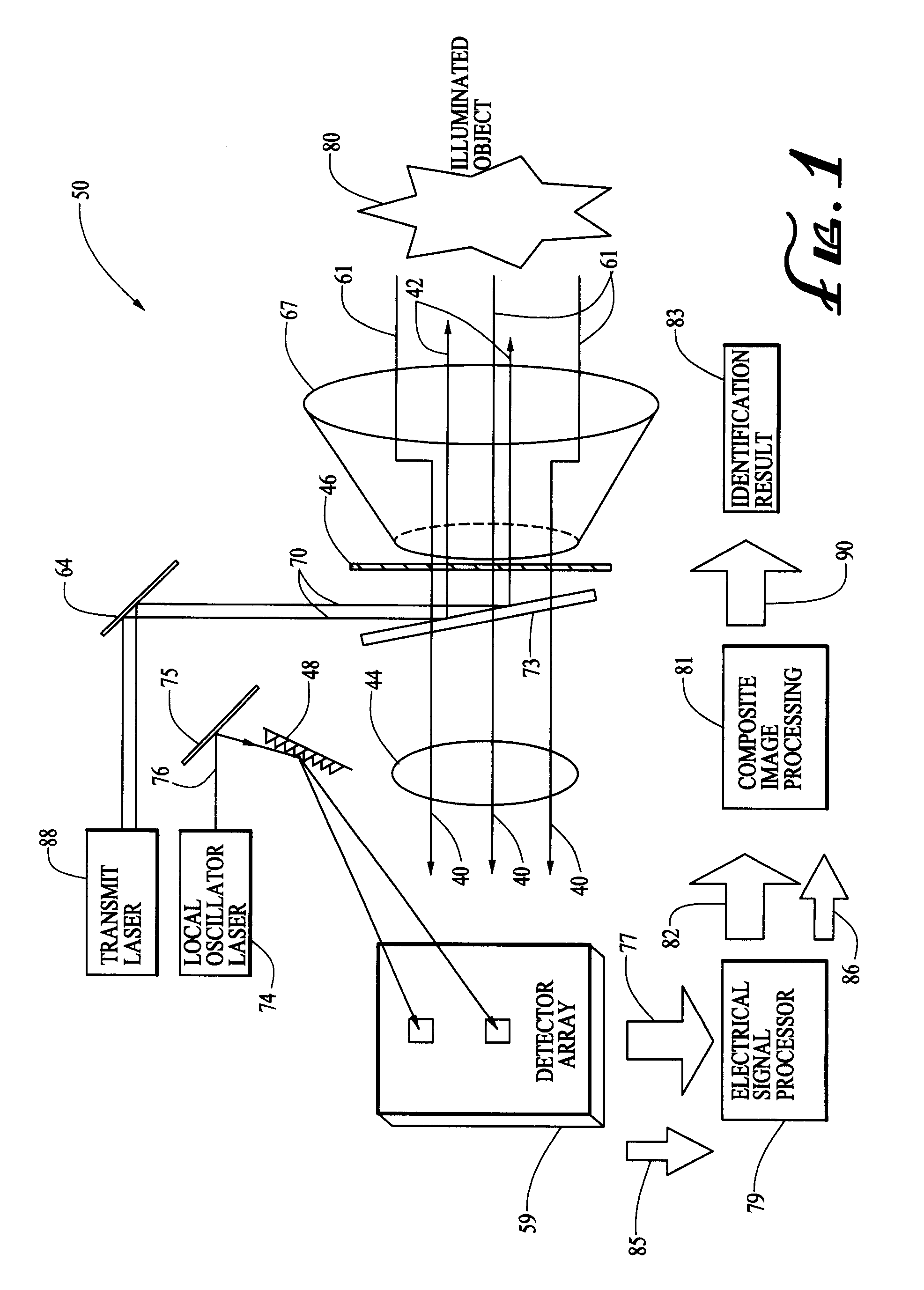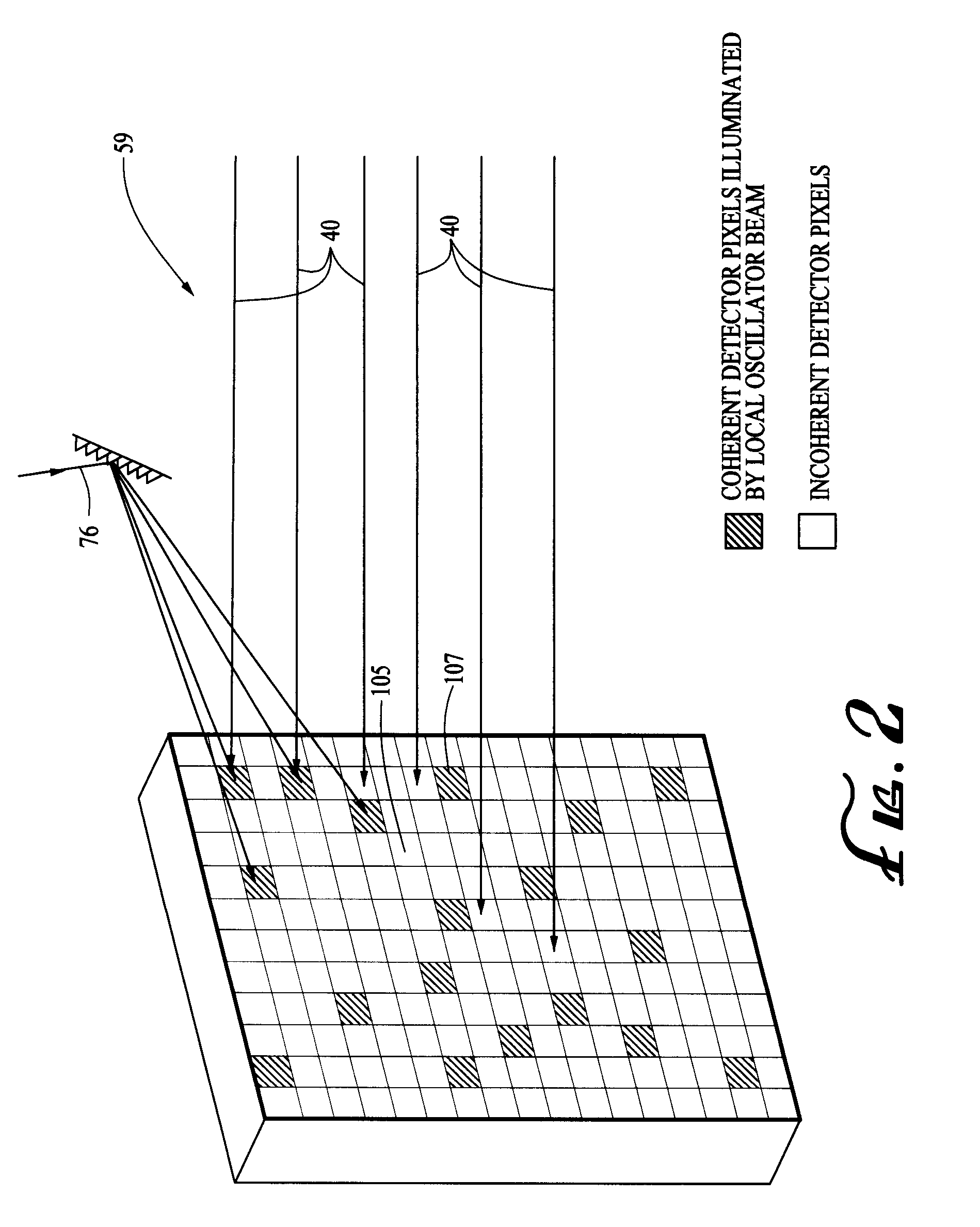Combined Coherent and Incoherent Imaging LADAR
a laser radar and coherent technology, applied in the field of long-range eye-safe laser radar (ladar) system, can solve the problems of lack of lack of ability to discern the object's micro-doppler vibration spectrum, and lack of design ability to develop simultaneous 3d image information
- Summary
- Abstract
- Description
- Claims
- Application Information
AI Technical Summary
Benefits of technology
Problems solved by technology
Method used
Image
Examples
Embodiment Construction
[0011]FIG. 1 depicts the preferred embodiment of the long range Combined Coherent and Incoherent Imaging LADAR system 50, where long range is the separation between the LADAR laser source and the object and is on the order of tens of kilometers.
[0012]Referring to FIG. 1, a linearly polarized CW type laser source 74 is used to generate a Local Oscillator (LO) laser beam 76 which illuminates elements of the detector array 59 used for coherent detection. A linearly polarized transmit laser source 88 is used to generate a transmit beam 70 which is used to illuminate the object 80 to be identified. The transmit laser source 88 must provide either a modulated continuous wave (CW) or pulsed laser beam 70. Either a CW or pulsed laser source will produce the required signal to noise ratio for the waveform used to accurately measure range and micro Doppler information. Although a CW waveform measures unambiguous frequency information from the target, there are techniques using coherent pulse ...
PUM
 Login to View More
Login to View More Abstract
Description
Claims
Application Information
 Login to View More
Login to View More - R&D
- Intellectual Property
- Life Sciences
- Materials
- Tech Scout
- Unparalleled Data Quality
- Higher Quality Content
- 60% Fewer Hallucinations
Browse by: Latest US Patents, China's latest patents, Technical Efficacy Thesaurus, Application Domain, Technology Topic, Popular Technical Reports.
© 2025 PatSnap. All rights reserved.Legal|Privacy policy|Modern Slavery Act Transparency Statement|Sitemap|About US| Contact US: help@patsnap.com



